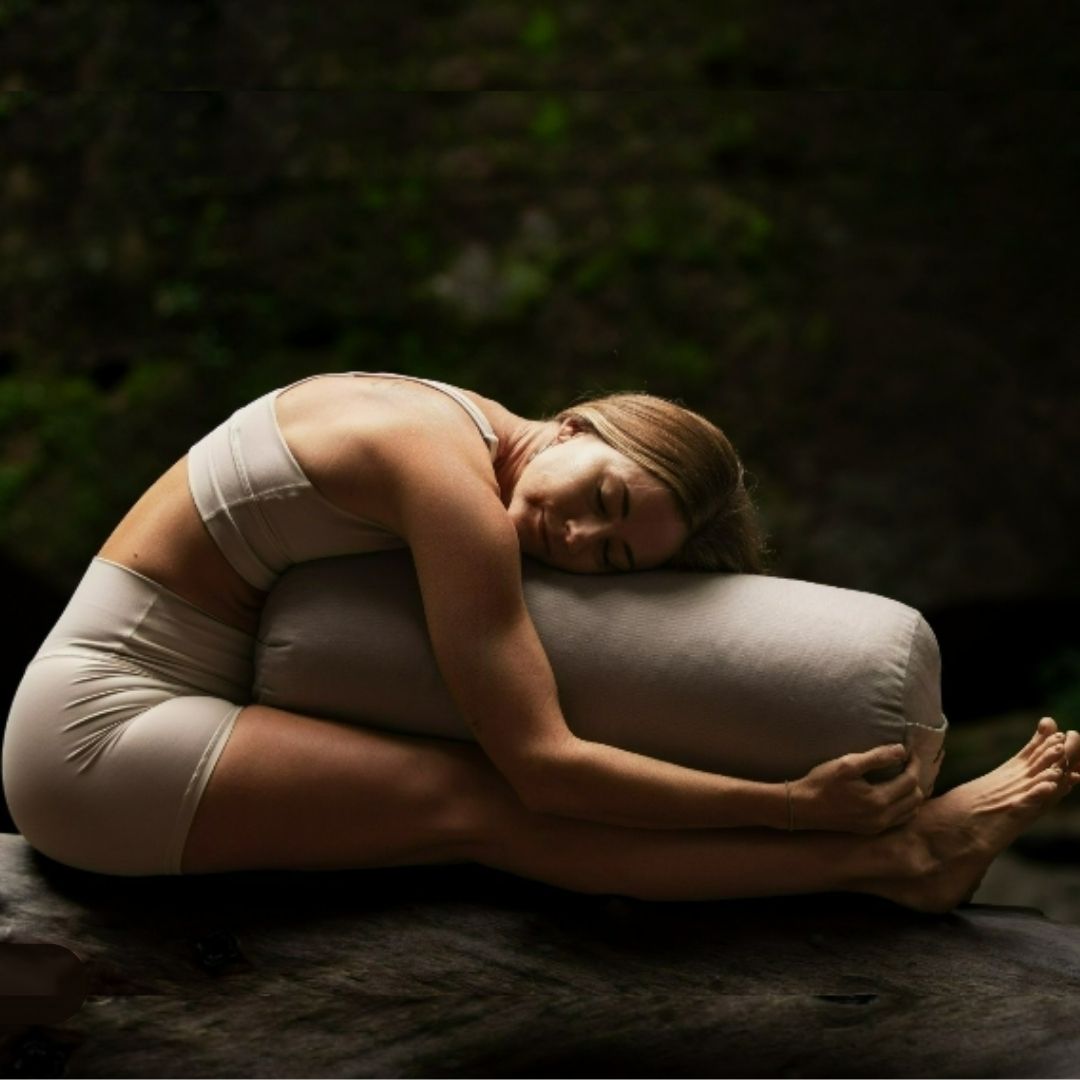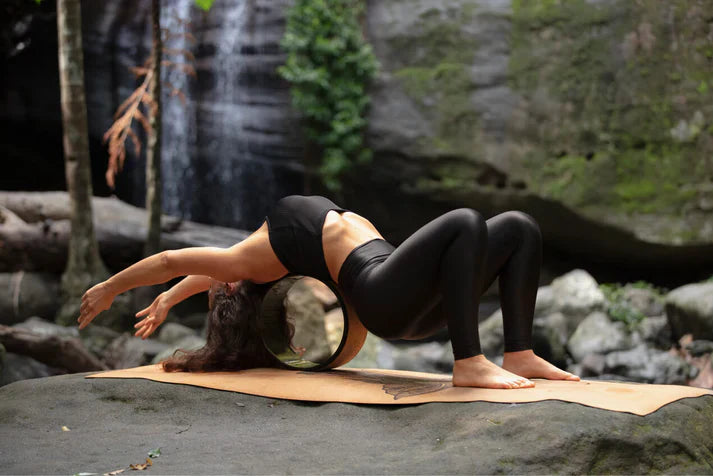Incorporating a yoga wheel into your practice can be a game-changer, offering support and challenges to help improve flexibility, deepen stretches, and build strength. A cork yoga wheel, in particular, provides a unique combination of eco-friendliness, stability, and comfort, making it a versatile tool for yogis of all levels.
Here are the top 5 benefits of adding a cork yoga wheel to your routine:
1. Deepens Backbends and Spinal Stretches
One of the most popular uses of the cork yoga wheel is for backbends and spinal stretches. The gentle curve of the wheel supports your back, helping you open up your chest and spine more deeply. It’s especially helpful for poses like Wheel Pose (Urdhva Dhanurasana), allowing you to safely stretch and release tension in the back and shoulders, which can improve posture and spinal mobility over time.
Key Poses to Try:
- Wheel Pose (Urdhva Dhanurasana) with the wheel under your back
- Cobra Pose (Bhujangasana) using the wheel for a deeper chest stretch
- Supported Forward Folds for spine and hamstring lengthening
2. Increases Hamstring Flexibility
For those looking to increase hamstring flexibility, the cork yoga wheel can be a helpful prop. It provides a stable base for deepening stretches, particularly in forward bends and standing poses. The cork surface offers a gentle grip, allowing for controlled and safe stretches without the risk of slipping.
Key Poses to Try:
- Seated Forward Fold (Paschimottanasana) with the wheel under your feet
- Standing Hamstring Stretch for added depth
- Extended Leg Stretch while seated or lying down
3. Boosts Core Strength and Stability
Beyond stretching, the cork yoga wheel can also be used to build core strength. Incorporating it into your practice in poses like plank variations or balancing postures encourages engagement of the abdominal muscles, helping you develop stability and control throughout your practice.
Key Poses to Try:
- Plank variations with hands or feet on the cork wheel
- Side Plank (Vasisthasana) with one hand on the wheel for added challenge
- Core activation in forward folds or standing poses
4. Eco-Friendly Design with Excellent Grip
One of the standout features of a cork yoga wheel is its eco-friendly design. Made from natural cork, this yoga wheel offers a non-toxic, biodegradable option for those mindful of sustainability. The cork surface provides excellent grip during practice, giving you the stability you need for both stretching and more dynamic poses.
Why Choose Cork?
- Sustainable and renewable
- Non-toxic and biodegradable
- Provides a slip-resistant surface for added stability
5. Improves Balance and Flexibility in Any Pose
The cork yoga wheel isn’t just for backbends—it’s also great for improving balance and flexibility in other poses. Whether you’re working on standing poses or deep stretches, the wheel can add an extra layer of support, making it easier to maintain stability while you deepen your practice.
Key Poses to Try:
- Warrior III (Virabhadrasana III) with the cork wheel under your hands or feet for balance
- Supported Pigeon Pose (Eka Pada Rajakapotasana) for hip opening
- Tree Pose (Vrksasana) with one foot on the wheel to challenge balance
Conclusion: Why Consider a Cork Yoga Wheel for Your Practice
A cork yoga wheel offers numerous benefits for yogis looking to enhance their practice. It helps deepen stretches, build core strength, improve balance, and increase flexibility, making it a versatile tool for practitioners of all levels. The eco-friendly design and gentle grip make it a thoughtful addition to any yoga routine.
If you're curious about how a cork yoga wheel can support your practice, consider exploring its benefits and how it might complement your current yoga props.


